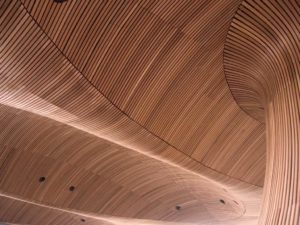Construction defects frequently arise in the construction of new homes and commercial buildings. These defects occur for a variety of reasons, but primarily due to the failure of the general contractor in charge of supervising the work and quite often the license under which most of the work is performed fails to properly supervise the work. Lack of supervision can take place on many levels, in the bidding process and in the selection and contracting with subcontractors, or during actual construction when the work is performed.
General contractors who are focused on the lowest bid or who simply allow financial considerations to drive the subcontractor bidding and selection process are prone to selecting subcontractors who are the lowest bidder rather than a subcontractor who is well qualified to perform the work they are bidding. When financial considerations rather than quality control drive the subcontractor bidding and selection process, then quality control is compromised and subcontractors are brought into the construction process who may not have the knowledge, expertise or internal quality control to prevent defects.

If this same process drives the selection of multiple subcontractors, the chances of defective workmanship increases significantly. Once construction is underway, the general contractor’s supervision of the subcontractors is critical to ensuring that the construction work by each and every subcontractor is quality workmanship, free of defects, and complies with the building code, the approved plans and industry and trade standards.
General contractors who focus simply on the pace of construction and meeting scheduling time frames and not on actual direct supervision of the work and specifically quality control are not only leaving the project at risk for poor workmanship and defective construction, but they are violating their duty to directly supervise the work as required by law in California under Business & Professions Code § 7068.1, under which the license holder for every contractor has a non-delegable duty to directly supervise the construction to ensure compliance with the law, including the building codes and the plans.
The license holder for a contractor, the Responsible Managing Officer, or RMO, is responsible for this direct supervision. If a contractor has multiple projects and multiple sites that require multiple RMOs in order to properly supervise the work at multiple sites, the contractor is failing to comply with the law and the supervision duties, if the contractor does not hire and engage sufficient licensed RMOs to directly supervise the work. At any construction site, if the RMO or license holder of any contractor is not at the site regularly overseeing the work and exercising direct supervision, this is not only a violation of the law, but another cause for defects.
Also, this is a non-delegable duty, so the contractor in charge of supervising the construction, particularly the general contractor, cannot “delegate” this responsibility to anyone, such as the subcontractors themselves and expect them to self-police their own quality control and plan or building code compliance, and especially the building and safety inspectors, who are not responsible for the construction, not at all responsible for flagging every defect and are absolutely not responsible for defects that may later plague a buyer.
That is the responsibility of the contractor, who profits from the construction and sale, and who is charged with the obligation to directly supervise the work for compliance.
Water Intrusion
Turning now to the most common construction defects. In terms of this author’s 35+ years of experience in the field of California litigation and familiarity with the standards for construction outlined in Civil Code § 896, the most outstanding and common-place defect, and perhaps the defect that causes the most problems, is water intrusion.
Water intrusion here is meant to include leaks into the interior of the structure from rain, storms and various forms of water penetration in the soil. Water intrusion problems also include moisture and condensation, which are identified throughout Civil Code § 896 as substandard construction and thus a defect.

This is such a vital and important part of the standards of construction that these defects, water intrusion, moisture and condensation are mentioned with respect to numerous elements of a structure, including windows and doors, patios and decks, roofs and parapet walls, stucco and plaster, foundations, retaining walls and other components. It’s clear that a water proof water-tight structure and every integrated component, and every opening is the standard and any violation of that standard, and not just by water intrusion, but any moisture or condensation penetration is a defect, and will cause damage.
Defects in Stucco and Lath or Plaster
Another common defect arises from the construction of the exterior components of the building, unrelated to water proofing and water intrusion: Defects in the stucco and lath or plaster. For some reason, many contractors simply cannot build these components correctly, and in addition to leaks, develop cracks and separations, bury the weep screed, are improperly integrated with connecting components, and deteriorate very quickly.
Other Defects
The final most common defect is difficult to isolate, but a host of problems tend to appear in electrical systems which can leak or bleed power causing high power usage and disproportionately high electrical bills, air-conditioning systems that are not adequate to cool larger spaces with high ceilings, large glass openings and higher square footage.

Many times this is caused simply by the builder’s deviation from the plans, flooring problems where stone, wood and other materials are improperly installed, finishes in cabinetry, railings and other details that are out of alignment, and finally structural issues where the building is experiencing excess movement and separations caused, most likely, by a failure to follow the structural plans and details accurately.
Defects Cause a Loss in Property Value
Any construction defect, whether the most common or the least, lessens the value and marketability of that property. And, until the defect is repaired, that defect must be disclosed to a prospective buyer, who will then discount the value of the property based on the defect or simply look somewhere else.
The Solution
The solution is simple, repair the defect … at the expense of the contractor who is responsible for the construction. This can be accomplished by Norton & Associates, who has been doing exactly that for over 35 years. Timothy Norton will evaluate your claim, engage experts who will identify the defect, the scope of the repair needed, identify the contractors responsible, and their insurance policies and their personal assets, recover the costs of repair, and if applicable, any other costs such as loss or use or alternate housing during repairs.
Protect your Investment, hire a construction defect attorney. For an immediate consultation on your construction defect issues, call Norton & Associates at: (310) 706-4134, or make an appointment online.


